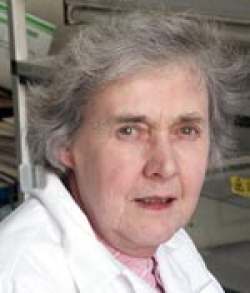Enid MacRobbie

- Born
- Unknown
In what is still considered to be a ‘man’s world’, Enid MacRobbie became the first woman scientist in Cambridge to be awarded a Personal Chair because of her work in biophysics. While this honour is one to be proud of, many of her honours came late in her career. This has been attributed to the fact she is a woman and allowed 75% of the studies she worked on to be published without her name.
MacRobbie was born in Edinburgh in 1931 and gained her first class physics degree 22 years later. Unsatisfied with how far she had come, she went on to complete her Ph.D where she studied how ion fluxes occur in plants. Her thesis has been described as pioneering as it created a framework for many techniques used today in the study of plants cells.
MacRobbie helped to introduce the idea of using mathematical models to describe physiological behaviours, which greatly enhances understanding when analysing research. This gave her a great reputation amongst her peers, establishing her quickly in the biophysics community.
After her studies, MacRobbie went on to take a professorship at the University of Cambridge. Her work there was applauded for being extremely successful, resulting in expanding her reputation from a local one to a global one. She revolutionised the courses she taught and was a strong promoter of equal opportunities for women, directly inspiring many fellow women to study science and pursue careers in this area.
Enid influenced many women undergraduates to pursue science as a career and many of them have gone on to gain international recognition.
Her continuing support and advice to others has meant that MacRobbie has influenced many esteemed biophysicists, as people have said of her that she is able to draw out the best in others. It seems she will never tire of science, as even in her eighth decade she can still be sometimes found experimenting away at her workbench.
This wonderfully influential and brilliant scientist was recognised by the Royal Society in 1991 when they made her a Fellow, which is the highest honour a scientist can receive in the UK.



